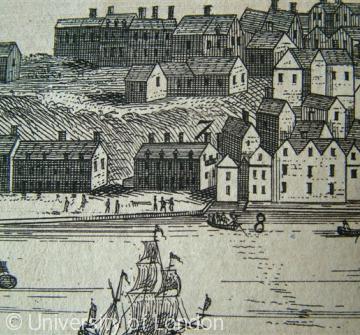Sunderland ferries

By 1700, the fords used by medieval and early modern travellers had more or less disappeared from the lower reaches of the Wear. A crossing between Sunderland and Monkwearmouth was not reinstated after being swept away by the sea in 1400, although people who knew the river were able to cross near its mouth at low water until early in the 19th century. Fords further upstream - one at Pallion noted in the 15th century, and that of medieval or earlier date at Hylton; were eventually replaced by ferries. High tide made these crossings impassable, as did any increase of water in the Wear, so that travellers were sometimes obliged to go to New Bridge, below Lambton castle, the only bridge downstream from Durham and until 1796 the nearest one to Sunderland. The Sunderland ferry, that closest to the mouth of the river, therefore remained of the utmost importance to the town.
Content generated during research for two paperback books 'Sunderland and its Origins: Monks to Mariners' (ISBN 13 : 9781860774799) and 'Sunderland: Building a City' (ISBN 13 : 978-1-86077-547-5 ) for the England's Past for Everyone series


